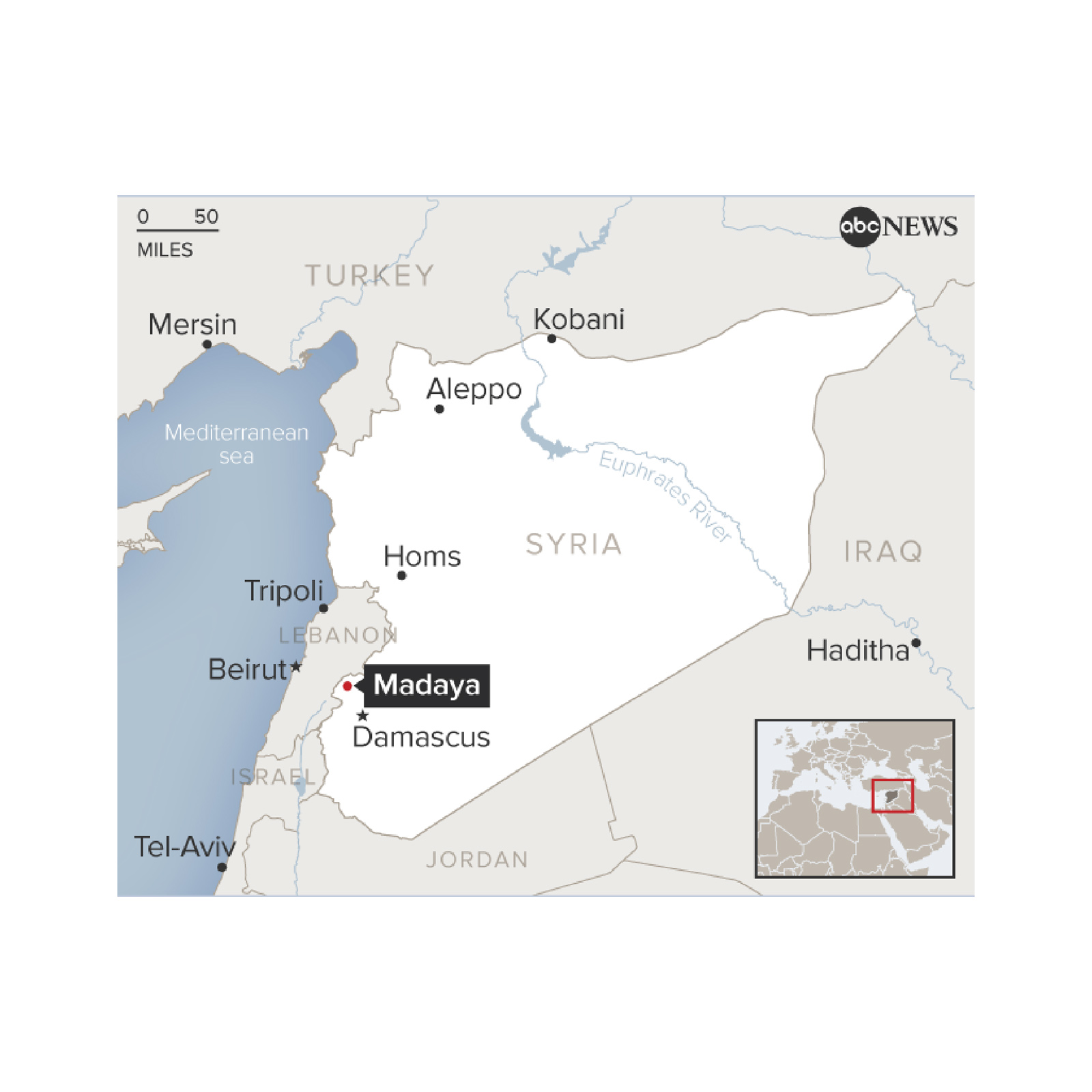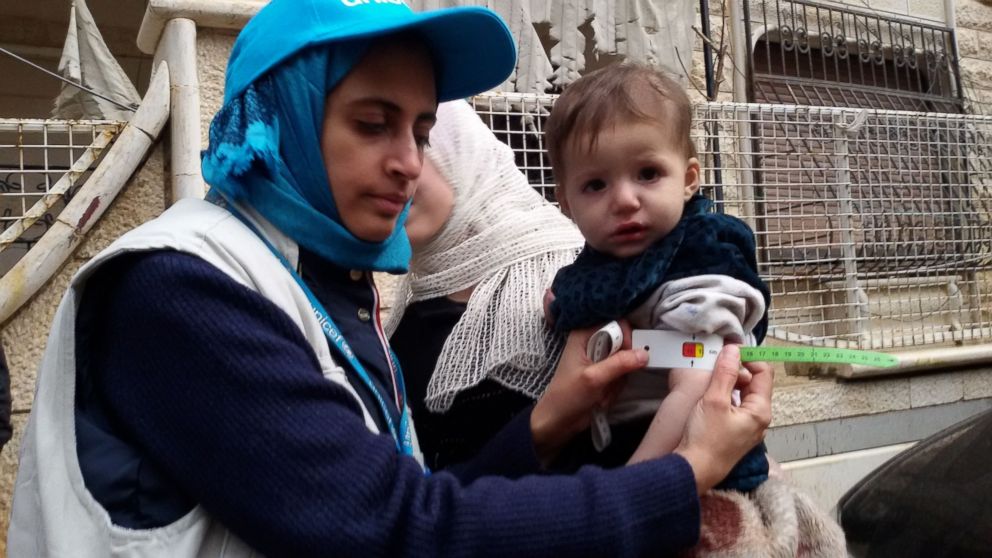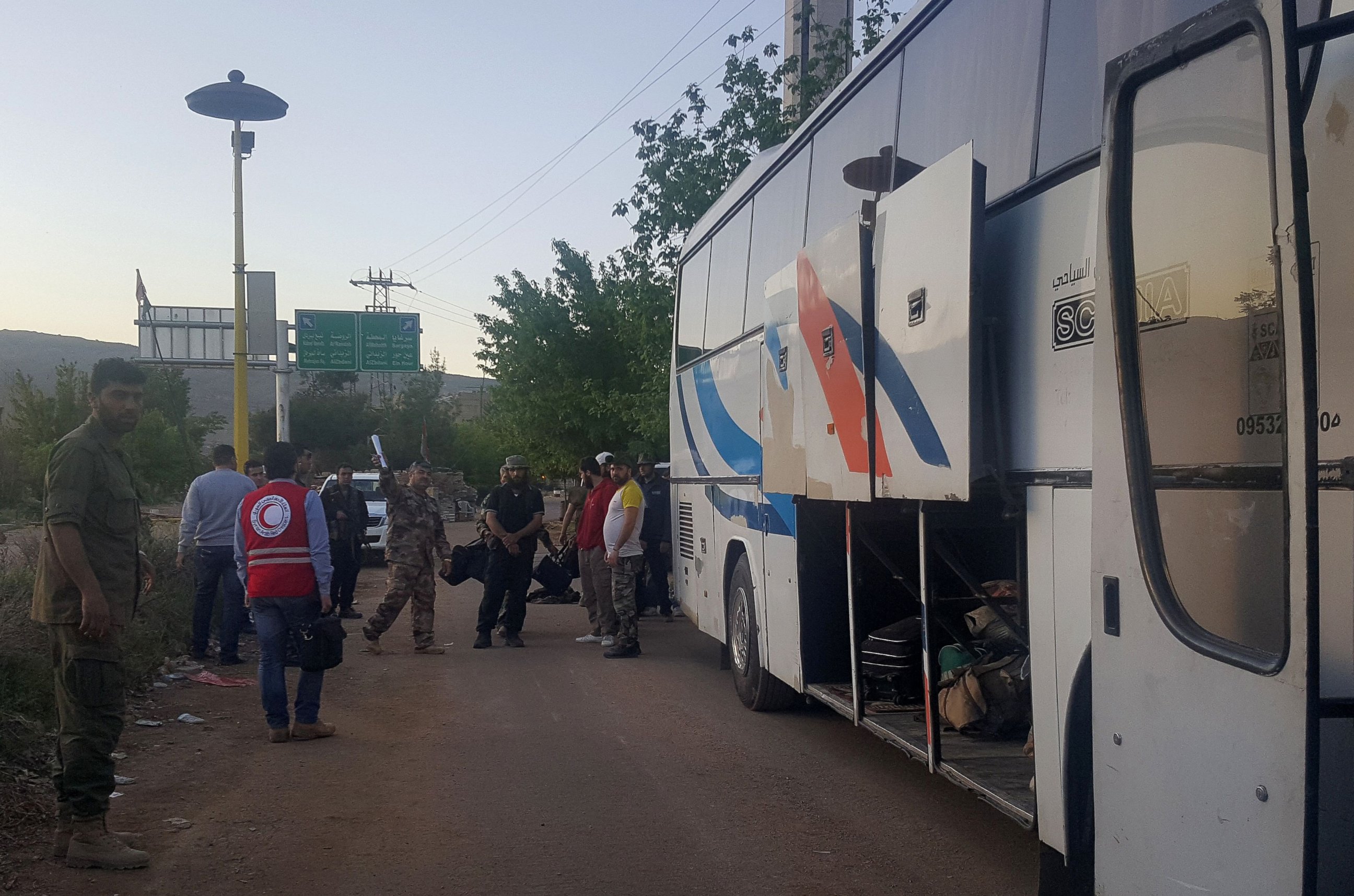The Situation Inside the Besieged Syrian Town of Madaya
Madaya is one of the hardest-hit towns where residents are stranded.
— -- Approximately 1 million Syrians live under siege while an additional 4.5 million are waiting for humanitarian aid to reach them in what the United Nations described as “hard to reach” areas.
One of those areas is Madaya, a Syrian town near the Lebanese border that is controlled by rebel forces who are opposed to the rule of Syrian president Bashar al-Assad.
The town is besieged by regime forces and their allies, Hezbollah, who have been keeping basic food, medicine and fuel from entering the town and preventing residents from leaving.
The situation has been so extreme, and aid convoys have been increasingly infrequent, that starvation and disease are major threats to the town's inhabitants.

Doctors Without Borders Director of Operations Brice de le Vingne likened the town to "an open-air prison" for the roughly 20,000 residents.
"There is no way in or out, leaving the people to die," he said in January.
The town is party to a year-old local truce agreement and was covered by two recent internationally brokered temporary cease-fire agreements that were meant to facilitate aid delivery. However, all have failed in easing the dire situation.
Explaining the Situation
Over roughly the past two years, various towns in Syria have been besieged. The vast majority are under siege by government forces and their allies, according to Samantha Power, the U.S. ambassador to the United Nations, though some pro-regime towns are besieged by armed opposition factions.
Negotiations involving all parties, including Hezbollah, over aid convoy access and possible exit strategies for the trapped residents have ebbed and flowed during that time.

Hezbollah is a Lebanon-based militant group intrinsically tied to Iran, a major bulwark of the Assad regime that has sent its military advisers and funded militias to prop up the embattled Syrian president. Considering Madaya's key location near the Lebanese border, a strategic supply route for Hezbollah, the town has become a particular target.
A rebel commander on the ground in Madaya told ABC News that opposition forces are currently in talks with Iran that are aimed at arranging the exit of local fighters, accompanied by their families, to Idlib, a province in the north of Syria under the control of the opposition.
However, the fate of the majority of the civilian population in the town remains unclear, as the deal would not mean the end of the siege.
Depleting Resources
The last aid convoys entered Madaya more than four months ago, meaning that the few remaining civilian services are dealing with depleting resources.
According to a local medic in Madaya, there is one field hospital left in the town, and it provides nothing more than basic medical care as a result of its limited resources. Most of the doctors take care of cases well beyond their training and specialties, and are dealing with increasing illnesses.
By mid-September, there had been more than 45 cases of typhoid in the town and the number of people suffering from meningitis continues to climb.
The Syria Institute, an independent non-profit research organization, corroborated those reports, noting that the medical efforts in Madaya and nearby Zabadani “have been devastated” by the lack of supplies and dwindling numbers of staffers.
"Humanitarian conditions declined during the reporting period due to the intensified siege conditions, with malnutrition-related illnesses once again rising after several humanitarian aid convoys during the previous quarter helped alleviate the acute hunger," according to the institute’s quarterly Siege Report, which covers actions that took place from May through July 2016.

"Residents lack access to clean water and electricity. Smuggling, bribery, and access to agricultural land are much more limited than in many other besieged areas, and many basic goods are unavailable,” the Siege Report states.
Over the past 10 months, ABC News has been in touch with a mother who is trapped inside Madaya with her family. After enduring growing hardships inside the town, she now lives in fear of another threat: a sniper, who has killed and injured people inside the city.
"We now know what birds feel like during hunting season," she told ABC News.
Read more about Madaya Mom and her family's struggle here.




